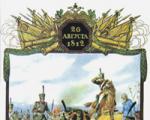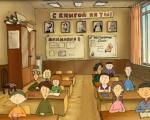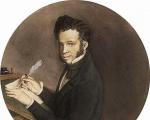Autumn is not only the golden time, but also the time when everyone starts to get sick. Children are the most susceptible to colds and viral infections. One of the symptoms of ARVI is a sore throat. How to deal with it unpleasant phenomenon in children, will tell “Popular about health”. Our topic today is throat lozenges for children. A list of medications will be presented indicating the age at which children are allowed to be given this or that medicine.
How to give your child lozenges for a sore throat?
It should be remembered that throat lozenges or tablets are full-fledged medicines containing active chemicals. Each drug is accompanied by instructions describing doses that should not be exceeded. The medication should be taken after meals. The tablet is slowly dissolved in the mouth, after which you need to refrain from drinking or eating for half an hour. The child needs to be explained that the lollipop cannot be chewed or swallowed, otherwise there will be no effect from such treatment.
Types of lozenges for children from the throat
Tablets for children intended for resorption are different. There are medications that relieve pain, soften the mucous membrane, as well as antiseptics. In each case, the composition contains different additives - painkillers, antibacterial components, essential oils, herbal supplements and others. The choice of lozenges should be based on the symptoms present. Since most parents do not have medical education, then it is best to consult a pediatrician to choose the right drug. Let's look at which throat tablets are allowed to be used by children and at what age.
List of lozenges for children
Group of throat antiseptics for children
Strepsils for children (from 6 years old) – softens and disinfects the throat, relieves inflammation, inhibits the proliferation of certain strains of bacteria and viruses.
Lizobakt (from 3 years old) – a resorption agent recommended for infections of the pharynx, throat and oral cavity, local antibiotic wide range with a pleasant taste. The composition contains vitamin B6, which restores mucous membranes and increases local immunity.
Decathylene (from 4 years) – has a mint flavor, relieves itching, softens the mucous membrane, contains an antibacterial component, is used for sore throat, tonsillitis, fungal infection, and also after removal of tonsils.
Faringosept (prescribed from the age of three). Effectively eliminates bacteria, relieves inflammation, soreness, and swelling.
Grammidin for children with raspberry flavor, prescribed from the age of four. In addition to a broad-spectrum antibiotic, it contains an analgesic component and emollient ingredients. The tablets help increase salivation.
Trachisan (from 6 years old), contains lidocaine, which quickly relieves pain. The tablets contain an antibiotic. The pills are effective against bacterial infections.
Tonsilotren (from two years of age) – disinfects the oral cavity and pharynx, increases local immunity, softens, relieves inflammation, and helps restore the mucous membrane.
Preparations based on natural ingredients
Tonsipret - approved for use with four years. Contains plant extracts of herbs, which together have an anti-inflammatory, analgesic and calming effect. The tablets are also used as an immunomodulator.
Isla-Mint - lozenges, prescribed to children from 4 years of age. They soften well, relieve pain, and eliminate soreness. They do not contain sugar; instead, fructose is included in the composition.
Doctor Mom (from 10 years old) – herbal lozenges, prescribed upon reaching the age of ten. They have a softening, anti-edematous, anti-inflammatory effect. Used for coughs, especially irritating and dry ones caused by sore throat.
Golden Throat (from 10 years of age under medical supervision) is a drug in the form of sublingual tablets containing herbal extracts. Effective when infectious lesions throat and hoarse voice.
Siberian propolis (from 5 years) - a product of the company " Siberian health" Sea buckthorn - one of the components serves to soften the throat, and propolis increases local immunity and helps to quickly relieve swelling and inflammation of the mucous tissues.
Imudon is created on the basis of inactivated microorganisms, bacterial lysates. Used for infections of the mouth and throat, including chronic manifestations tonsillitis, pharyngitis. Increases the level of local antibodies to common bacteria. Allowed from three years of age.
The list of throat medications for children is very large, and it is far from complete. It is worth paying attention that you should choose a drug based on the symptoms of the disease, while taking into account the composition of the components of the medicine. Babies may have allergic reaction on certain substances, including herbal extracts and bee products. If, after starting to take the pills, you notice alarming symptoms - a rash, itchy skin in your child, stop treatment and show your baby to a doctor.
Usually, when a sore throat begins to hurt, soreness, dryness, cough, and others appear. unpleasant symptoms, we immediately rush to the pharmacy and buy a bunch of beautiful boxes with multi-colored “suckers” inside... There are lollipops, dragees, tablets, lozenges, ointments, creams, sprays, aerosols, and eucalyptus-flavored solutions, mint, lemon, raspberry, etc. - the choice is really huge...
Falimint- Dragee. Local reflex remedy. A product with a refreshing and cooling effect for the treatment of diseases in the oral cavity and pharynx.
Faringosept
Strepsils— Lozenges. Antiseptic.
Koldakt Lorpils- Lollipops. Antiseptic + local anesthetic. A drug with analgesic, antibacterial and emollient effects for the treatment of tonsillitis, laryngitis, stomatitis, pharyngitis, glossitis. Strepsils Plus- Spray. Antiseptic + local anesthetic.
Strepsils Plus— Lozenges. Antiseptic + local anesthetic.
Strepsils Plus— Lozenges. Antimicrobial + local anesthetic.
Suprima-ENT— Lozenges. Antiseptic.
Septolete Plus- Pastilles. Antiseptic.
Hexasprey- Aerosol. Antiseptic. A drug with antibacterial, anti-inflammatory and analgesic effects for use in otolaryngology and dentistry.
Hexalize— Lozenges. Combination with anti-inflammatory and antimicrobial effect. Combination drug For local application V ENT practice and dentistry with antimicrobial and anti-inflammatory effects.
Septolete NEO- Pastilles. Antiseptic.
Sebidin— Lozenges. Antiseptic + vitamin.
Laripront— Lozenges. Antimicrobial, combined.
Coldrex Lari- Lollipops. Local anesthetic.
Isofra- Nasal spray. Antibiotic aminoglycoside. Bactericidal antibiotic for local use in otolaryngology.
Bioparox— Dosed aerosol for topical use. Polypeptide antibiotic.
Hexoral- Aerosol. Antiseptic.
Hexoral
Stomatidin— Solution for topical use. Antiseptic.
Stopangin— Solution for topical use. Antiseptic. A unique drug against inflammation and sore throat.
Stopangin— Spray for topical use. Antiseptic. A unique drug against inflammation and sore throat.
Kamistad- Gel. Antiseptic + local anesthetic.
Polydexa —
Nasal spray. Antibiotics + alpha-agonist + glucocorticoid. It has antibacterial, anti-inflammatory and vasoconstrictor effects.
Ambassador- aerosol. Antiseptic. Contains propolis + ethanol+ glycerin.
Kameton— aerosol for topical use, dosed spray for topical use. Antiseptic. Camphor+Menthol+Chlorobutanol+Eucalyptus oil.
Yox— Solution for topical use. Antiseptic. For the treatment of infections of the mouth and throat.
Yox— Aerosol for topical use. Antiseptic. For the treatment of infections of the mouth and throat.
Sage Doctor Theiss
Septolete- Pastilles. Antiseptic.
Septolete D- Pastilles. Antiseptic.
Askosept- Lollipops. Anti-inflammatory, antiseptic, antitussive combined.
Rotokan- Solution. Anti-inflammatory herbal.
Evamenol- Ointment. For the treatment of rhinitis.
Lugol's solution— Solution for topical use. Antiseptic.
Chlorophyllipt —
Solution for topical use. Antiseptic.
Pinosol – Cream- Cream. Anti-inflammatory, antiseptic.
Pinosol Ointment- Ointment. Anti-inflammatory, antiseptic.
Pinosol Solution- Drops in the nose. Anti-inflammatory, antiseptic.
And many, many, many others...
But it doesn’t even occur to anyone: “Are these really medicines?” Let's find out...
Antiseptics —
substances that kill bacteria on the surface of mucous membranes, They are powerless against viruses. Antiseptics, unlike antibiotics, have antibacterial activity only when used externally.
Anesthetics-substances that have the ability to cause anesthesia, i.e. block nerve conduction. They soothe pain - they block the flow of pain impulses to the brain.
What could be simpler? I sucked on a lollipop, killed all the germs, and my throat became healthy! But, unfortunately, practice shows that this is just an inflated myth created by advertising...
Antiseptics are really capable of having any effect on pathogenic bacteria - killing or inhibiting their growth, but this is only possible with early stages diseases when the number of bacteria is small! In other cases, the use of antiseptics is ineffective and is only symptomatic...
Many antiseptics contain an anesthetic, which can relieve pain, but can also irritate the throat, which in turn will only make the pain worse after the anesthetic wears off! Anesthetics, unlike antiseptics, do not have an antibacterial effect, that is, they do not affect the cause of inflammation at all.
Some throat remedies contain emollients, for example, honey, licorice, glycerin, which can have an “imaginary” effect on the mucous membrane of the throat. They may also contain components with pleasant smell and flavors, such as peppermint, eucalyptus, cinnamon, lemon, cloves, anise, etc. The main effect of these drugs is that their smell and taste can help you feel better. They can increase the secretion of saliva, which in turn has a soothing effect and washes the inflamed surfaces of the throat...
... Even more ineffective are medications containing the same components, but only in liquid form, since they are swallowed, going directly into the stomach, and can have a local effect on the throat for only a split second!
Often great value given gargling antiseptics. Many people claim that if you wash your sore throat several times a day, all your problems will be solved! Not at all...
Based on my experience, I can say that the situation with gargling is the same as with the use of antibiotics - this procedure can only bring a temporary effect... For example, as a child, on doctors’ recommendations, I often gargled with a solution of furatsilin. At first it really helped me relieve exacerbations, but over time, furatsilin stopped having any effect on my sore throat at all! This was directly related to the fact that my pathogenic bacteria became resistant (resistant) to this drug! But then I didn’t even know about it, continuing wasted dilute these little yellow tablets... Moreover, I had no idea that this would further disrupt the balance of microflora between beneficial and pathogenic bacteria — increases dysbiosis...
- Every time you gargle with furatsilin, chamomile, iodine, and eat Strepsils, you disrupt the microflora!
Over the 11 years of my problems with the nose, throat and lungs, I have dissolved, injected, poured, dripped, smeared, “rinsed” not a single thousand different lollipops, dragees, tablets, lozenges, ointments, sprays, aerosols, solutions... But besides “temporary relief” ”, it brought me absolutely no benefit! Sometimes the situation reached the point of absurdity! One day, out of despair, I took a can of Yox aerosol and sprayed it several times into each of my nasal passages... Lord, what a wild pain it was! In the hope of getting rid of another exacerbation in my nose, in the stupidest way I just burned my mucous membrane...
In addition to all of the above, there are many recipes for gargling with herbal infusions: chamomile, sage, nettle, oregano, thyme, calendula, etc. But changing the places of the terms does not change the sum... Herbs- these are the same antiseptics only not chemical, but natural origin, so there is no need to talk about their effectiveness either!
“Local” antibiotics or antibiotics local action are also among the most commonly used drugs in the treatment inflammatory diseases nose and throat. At the moment, the most “promoted” of this series of drugs are Bioparox and Grammidin. Personally, I don’t know a single person (including myself) to whom they would clearly bring any benefit... But at least it’s encouraging that you can now find in the instructions for use of Bioparox warning:
“Bioparox should not be used for long periods of time as this may disrupt the normal microbial flora with the risk of spreading infection.”
And one more thing... IMPORTANT! Often on the Internet, in TV programs like “Malakhov+”, on the radio, as well as by other “well-wishers”, this property of antiseptics to kill germs is uncontrollably exploited... Starting from harmless advice, for example, gargling carrot juice, vinegar solution, and ending with advice from the series “drink vodka with your nose, and after four minutes lubricate your tonsils with kerosene”... Beware of such messages! Be careful!
Most respiratory infectious diseases are accompanied by painful sensations in the throat area, dryness, soreness. These unpleasant symptoms indicate that the mucous membrane of the throat is affected by viruses or bacteria. They actively reproduce, secreting toxic substances, which provoke inflammation. The most common method of treating a sore throat remains topical medications, including lozenges and lozenges in a variety of flavors.
Purpose and effect of local throat medications
Throat infections also lead to pain. It becomes difficult for a person to swallow and speak. Local preparations allow you to effectively and quickly cope with the causative agent of the disease. They have anti-inflammatory and antiseptic effect, prevent the proliferation of bacteria and viruses.
Most lozenges have a complex effect; they not only stop inflammation, but also quickly relieve pain and help get rid of dry throat. Drugs for plant based also soften and moisturize the throat mucosa.
Throat lozenges often resemble lollipops, but they are a medicine that, overdose, can lead to unpleasant consequences. When taking the drug, you must follow the instructions and carefully read about possible side effects.
Local medications for sore throat are prescribed in following cases:
- And . With colds and flu, rhinitis and sore throat invariably appear. To speed up recovery, it is advisable to start treatment when the first symptoms appear. IN in this case drugs with analgesic and anti-inflammatory effects are prescribed.
- . Inflammation of the larynx is often accompanied by severe and acute pain in the throat, as well as a dry cough. Local medications can relieve pain syndrome and stop the spread of the inflammatory process to other tissues.
- Inflammatory diseases of the oral cavity. Lozenges are also effective in the treatment of stomatitis and other inflammatory diseases of the oral cavity. The doctor should select the drug taking into account the characteristics of the disease.
- . Tracheitis often occurs as a complication and is accompanied by pain both in the pharynx and behind the sternum. Local medications can stop inflammation and relieve an attack of dry cough.
- . With tonsillitis, inflammation affects the tonsils. The causative agent of the disease can be both viruses and bacteria. Whenever purulent tonsillitis Lozenges containing an antibiotic are prescribed.
Depending on the diagnosis, the dosage of the drug and the duration of treatment will vary, so it is advisable to consult a doctor before starting to take the medicine.
Classification of lozenges

Lozenges are similar in that they must be kept in the mouth until completely dissolved. They may differ in price, taste, composition, and effect. This or that drug should be selected by the doctor, taking into account the diagnosis and the patient’s condition. This will make the treatment as effective as possible.
Lozenges are classified primarily by composition and nature of action:
- With anesthetic. Most often, these drugs relieve pain, but do not help stop the proliferation of bacteria and viruses. They are prescribed for severe sore throat, but should not be used for throat irritation caused by chemicals, smoking or injury. The list of such tablets includes Falimint.
- With an antibiotic. Lozenges containing antibacterial substances are prescribed exclusively for bacterial infections, for example, with. At viral lesions throat, such treatment will not only not be effective, but will also cause harm. The drug disrupts the protein synthesis of the bacteria and prevents it from multiplying. Antibacterial local drugs for the throat include Streptocide, Grammidin, Stopangin.
- With antiseptic. Antiseptic preparations relieve redness and inflammation. They are recommended for mild flow illness, cold or mild sore throat. Antiseptic drugs for the throat include Faringosept, Septolete, Lizobakt.
- Plant based. Plant-based preparations are considered the safest, however, when using them, an allergic reaction may occur, since they contain a lot of herbs and essential oils. Such lozenges have a mild effect, relieve inflammation, soften and moisturize the mucous membrane of the throat, eliminate soreness and relieve an attack of dry cough. The most common herbal-based drugs are Pectusin, Agisept.
- On a non-steroidal anti-inflammatory basis. These are drugs that simultaneously relieve pain and stop inflammatory process. These include, T-sept.
List of the most common drugs

The choice of lozenges in pharmacies is quite wide. They differ in both price and composition. When choosing a drug, you should focus not only on the price, but also on the composition, availability side effects, contraindications.
Children over 3 years of age are prescribed the same medications as adults, but in a lower dosage. For children under 3 years of age, sugar-free lozenges or syrups are recommended.
The list of the most common throat lozenges includes:
- Strepsils. This is a popular remedy for sore throat, which is available in the form of lozenges in various flavors. The drug contains antiseptic substances that help stop the inflammatory process, and also effectively soften the throat and relieve pain. Lozenges that contain mint and eucalyptus can also reduce.
- Grammidin. The drug is available in the form of lozenges with a pleasant mint taste. The tablets contain lidocaine, which quickly and effectively removes even severe pain. Most often, the composition also includes an antibiotic, which makes the drug effective for sore throat. Grammidin can be prescribed to children over 6 years of age.
- . Herbal lozenges Doctor Mom contain large number herbs They have a pleasant taste, quickly relieve soreness and dryness in the throat, soften the mucous membrane, and stop attacks of dry cough. However, they are not intended to treat children.
- Faringosept. The drug is prescribed for infectious diseases of the throat and oral cavity. It has a bacteriostatic effect and relieves inflammation. Faringosept can be taken by children over 3 years old.
- . Lozenges are available in various fruit flavors. They have an antiseptic and analgesic effect. The composition includes chlorhexidine, which is a strong antiseptic. Hexoral is effective for the treatment of viral and bacterial infections. Can be used to treat children over 6 years of age.
It is worth remembering that tablets and lozenges are not identical. They have different composition. Universal remedy There is no cure for any throat disease. It is necessary to select a drug taking into account the age, condition of the patient and the course of the disease.
Features of use and contraindications

Each drug has its own contraindications. You should familiarize yourself with them before starting treatment. Most lozenges have a negative effect on the stomach if taken in overdose. People with gastritis or stomach ulcers should be careful when taking these pills. In case of overdose, digestive upset may occur.
A contraindication to the use of the drug is childhood up to 3 years. little child may choke on the lozenge. The risk of side effects and allergic reactions also increases.
The instructions for some drugs indicate pregnancy and lactation as contraindications. In the first trimester of pregnancy, it is advisable to refrain from taking any medications. IN further treatment must be prescribed by a doctor.
If there are ulcers or bleeding wounds in the mouth, lozenges should not be used until a full examination has been completed.
To avoid overdose and side effects, you must adhere to the rules for using lozenges:
- Tablets should not be confused with lozenges. It is permissible for an adult to dissolve no more than 6-8 lozenges per day. An overdose leads to indigestion, diarrhea, and an allergic reaction.
- Lozenges must be dissolved until completely dissolved. It is not recommended to swallow them whole or chew them. It is during resorption that the active ingredients are most effective.
- After dissolving the tablet, you should refrain from eating, drinking, and smoking for about an hour. It is best to take the drug after meals.
- As a rule, the drug is taken until the symptoms disappear. The course of treatment can last 7-10 days. If there is no effect, you need to consult a doctor and change the treatment regimen. Long-term use the drug will cause side effects and reduce its effectiveness.
More information about what to do if you have a sore throat can be found in the video:
It is worth remembering that, despite all the effectiveness local drugs They are most often prescribed in combination with other drugs. Complex treatment is more effective and avoids complications.
Colds among children of different ages occur most often. Seasonal influenza, ARVI, respiratory and ENT diseases caused by a variety of bacteria and viruses, are accompanied by unpleasant and painful symptoms.
In addition to fever, weakness, runny nose and cough, there is pain and sore throat, which brings a lot of inconvenience. If a grown-up baby may complain about an illness, then the baby only cries and is capricious. This is why parents do not always recognize the problem in time. How to treat a sore throat? What to do if you get sick infant? What medications are suitable for children of different ages?
Causes and symptoms of sore throat
Before the pediatrician arrives, you can examine your child’s throat yourself. You will need a clean spoon or a special disposable spatula. An adult's hands should be washed thoroughly.
At viral infections tonsils are usually red and inflamed. Fungal and bacterial pathogens leave unhealthy plaque or pustules on the mucous membranes.
More often sore throat accompanied by other symptoms:
- high temperature, chills;
- cough;
- poor appetite, general malaise;
- crying and moodiness;
- thick coating on the root of the tongue and tonsils;
- redness of the mucous membrane;
- hoarseness of voice;
- rhinitis (runny nose).
Rhinitis becomes common cause irritation of the mucous membranes of the throat, as parts of the nasopharynx are connected. That is why treatment of a runny nose becomes an integral part of general therapy and helps relieve pain and prevent bronchitis.
Diseases are caused by viruses, bacteria, fungi. Often a sore throat appears due to allergies or simple hypothermia. The course of treatment and prescribed medications depend entirely on the type of causative agent of the disease.
Possible causes of the problem:
- ARVI, acute respiratory infections;
- flu;
- inflammation of the tissues of the pharynx, tonsils or larynx;
- infectious diseases of the oropharynx and nasopharynx (tonsillitis, pharyngitis, laryngitis, sinusitis, sinusitis, etc. (we recommend reading: ).);
- teething;
- measles;
- chickenpox;
- rubella;
- scarlet fever;
- inflammatory process in the oral mucosa (stomatitis).
Drug treatment of throat in children
Dear reader!
This article talks about typical ways to solve your issues, but each case is unique! If you want to know how to solve your particular problem, ask your question. It's fast and free!
The doctor is developing therapeutic regimen after examining the sick child and taking necessary tests(mandatory smear and blood test). The type of pathogen is determined by the smear. Treatment involves addressing the underlying cause of the disease and eliminating symptoms.
It is important to remember the consequences of self-diagnosis and self-medication. If you suspect any illness, you should consult a doctor.
Treating the throat of young children is not easy, since the list of approved medications is very short. Local therapy should have a bactericidal, sedative and analgesic effect. Depending on the baby’s age, it includes irrigation, rinsing, inhalation, sucking tablets and lozenges.
The best products for babies up to one year old
Recognize painful condition in children under 1 year of age it is difficult. At this age, they cannot complain to their parents about pain or feeling unwell. The main signals are constant whims, crying, refusal to eat. You should be attentive to the appearance of a cough or runny nose.
For any alarming symptoms It is necessary to examine the baby’s throat for redness or plaque (this must be done very carefully) and immediately contact a pediatrician. The immunity of infants is not fully formed. They are susceptible to any external or internal factors. Getting into the body infant, pathogenic microflora immediately begins to multiply.
The difficulty of treatment is that early age. Most medications are contraindicated for children. Children of the first year of life do not know how to rinse their mouths and throats or dissolve tablets. The main effect of therapy is aimed at eliminating the very cause of pain. After this, the symptoms go away automatically. However, it is difficult to relieve discomfort during treatment.

The main drugs allowed for children under 1 year of age:
- Viferon or its analogues, suitable for age. These are rectal antiviral suppositories based on human interferon. They act exactly the same as others antiviral drugs. The body begins to produce additional proteins that fight infection.
- Anaferon - antiviral agent in tablets that are dissolved in water. Approved for use from 1 month.
- Viburkol - homeopathic rectal suppositories. Are used as aid. They have anti-inflammatory, analgesic and mild sedative effects.
- Antibacterial drugs. The most common in this case are Cefadox, Cefix, Sumamed, Amoxiclav, as well as their analogues. The doctor prescribes antibiotics only when bacterial infections. Use them according to at will forbidden.
If the baby has a fever, it is necessary to use an antipyretic agent (syrup or suppositories). Such drugs are mainly produced on the basis of ibuprofen or paracetamol. Parents usually use Nurofen or Panadol. It should be noted that in addition to reducing fever, medications relieve pain.

For disinfection and bactericidal effect, irrigation and lubrication of the oral cavity with antiseptics are used. Sprays are prohibited for one-year-old babies. For this, saline solution, Miramistin, Chlorophyllipt are used. A bandage or gauze is moistened in the solution and then the oral cavity is wiped. The medicine enters the throat along with saliva.
Some parents decide to irrigate. The liquid is drawn into a small syringe, the baby’s head is tilted forward and the medication is carefully injected. Since the head is tilted forward, the fluid immediately comes back out. This must be done very carefully and only on the recommendation of a doctor.

Effective drugs for children from 1 to 3 years old
It is easier to treat a sore throat at this age. At 2 years old, a child can say that he is in pain. The list of medications for topical use is wider. The doctor prescribes medications based on the child’s diagnosis and symptoms. Products indicated for infants, and other drugs. They use rinses (if the child can rinse his mouth), irrigation, lubricating the mucous membrane, and sometimes lozenges.
Preparations in aerosols (sprays) with anti-inflammatory, analgesic and antiseptic effects:
- Hexoral;
- Hexaspray;
- Tantum Verde (we recommend reading:);
- Proposol (contains propolis, may cause allergies);
- Yox;
- Lugol (based on iodine) (we recommend reading:);
- Antiangin (contains chlorhexidine);
- Miramistin;
- Inhalipt;
- Aqualor (based on sea water);
- Panavir Inlight (homeopathy).

It is important to note that the medications listed above are prescribed exclusively by a doctor. As a rule, the instructions indicate that use is permitted from 4 or 5 years of age. However, in pediatric practice they are used earlier - at 2-3 years. You cannot choose a spray yourself and replace it with another drug. The products contain different active substances, and the wrong medication can only harm the baby.
Unlike adults, for young children from 2 years of age the medicine is sprayed not into the throat, but onto the mucous membrane of the cheek. In some cases, this causes laryngospasm. Active ingredient gets on the tonsils or in the throat with saliva.
Sucking tablets, lozenges and lozenges are used infrequently. Not every child will be able to swallow a lollipop, and there is a risk of choking. In addition, the composition of some drugs is dangerous for children and is too aggressive.
Sometimes doctors advise to relieve pain and soreness with absorbable, inexpensive, proven tablets that quickly dissolve in the mouth:

Treatment of throat in children over 3 years of age
Age from 3 years is a fairly long time period. The child can be either 3 years old or 5 or 7 years old. However, according to medical practice, the name of the drugs rarely differs for children of this age. In case of urgent need, children aged 3-4 years are prescribed drugs approved from 5 or 6 years of age. The dosage and frequency of use differ.
Lozenges, lozenges or lozenges:
- Faringosept (we recommend reading:);
- Septefril;
- Lysobacter;
- Strepsils;
- Decathylene;
- Antiangin;
- Septolete;
- Falimint;
- Tantum Verde et al.

Solutions and aerosols (depending on the principle of action):
- Contains antibiotic: Inhalipt. For lasting results, use for at least 5 days.
- Antiseptic and bactericidal agents: Orasept, Hexasprey, Hexoral, Lugol, Yox, Antiangin, Miramistin, etc. (we recommend reading:).
- Solutions that relieve the inflammatory process. Tantum Verde or Stopangin is usually used.
- Aqualor, Aqua Maris, Humer contain sea water. Used to moisturize, soothe and cleanse mucous membranes.

Inhalations
The nebulizer has long become an integral part home first aid kit from parents. Safe inhalations have many benefits. They are allowed for children up to one year old (the drug is selected by the doctor), the liquid is broken down into the smallest particles, which allows them to settle evenly on all tissues. The medicine can reach hard to reach places. During inhalation, steam is inhaled both through the mouth and through the nose (that is, both the nasopharynx and oropharynx are simultaneously treated).
Medicines used for sore throat:
- Lysozyme;
- Tonzilgon N (we recommend reading:);
- saline solution;
- propolis tincture;
- calendula tincture;
- Rotokan;
- Furacilin;
- Miramistin;
- Bioparox etc.
Along with saline solution for inhalation, it is used mineral waters, for example, Borjomi or Essentuki. The water must be of high quality; it is better to buy it at a pharmacy.
Rinse
Gargling with antiseptics allows you to cure your throat much faster. However, at a very early age, rinsing the mouth will not work. Parents lubricate or spray with liquid inflamed area. Suitable for this:
- Chlorophyllipt (for rinsing it is diluted in water);
- Miramistin;
- Orasept;
- Furacilin;
- Hexoral.
Folk remedies
Traditional medicine has incorporated many recipes to eliminate the disease. Consider your baby’s individual propensity for allergies and be sure to consult with your pediatrician.
 Saline solution easy to prepare for nasal rinsing and gargling
Saline solution easy to prepare for nasal rinsing and gargling Common and effective home remedies:
- Decoction for nebulizer. Pour 10 g of the prepared dry mixture of St. John's wort, yarrow, eucalyptus and calendula flowers into a glass (250 ml) of boiling water. Boil for 5 minutes in a water bath, cool and strain thoroughly so that solid particles do not spoil the device.
- Salt rinses. In a glass warm water dissolve a teaspoon of salt (can be iodized), rinse your mouth at least 3-4 times a day. You can add a couple of drops of iodine and baking soda on the tip of a knife.
- Squeeze the juice from freshly grated beets. Dilute it clean water in a 1:1 ratio. Use for rinsing. Beetroot is an effective antiseptic.
- Dilute 10 ml of liquid propolis in a glass of warm water (200 ml). Gargle with the resulting liquid up to 5 times.
- Add a teaspoon of honey to a glass of warm milk and a little butter. Drink before bed or during the day. The product is not suitable for infants or children with allergies to honey.
To boost immunity and soothe a sore throat, teas with raspberries or black currants are useful for children. Many housewives prepare fresh jam for the winter (without cooking), which retains all the vitamins.
The berries are ground with sugar (1:1) and stored in the refrigerator in sterilized jars. If you have a large freezer, you can freeze them. This tea is useful for colds, flu, and to strengthen the immune system.
Lozenges for the throat are easy to use and bring instant relief, which is why they have become popular among most people suffering from colds or infectious diseases. Many names of drugs of this type cause confusion among consumers. Therefore, the advice of a doctor who will recommend the most best option drug.
Lozenges for throat lozenges traditionally contain active antiseptics, analgesics or antibiotics. All active ingredients have a local effect. There is a group of tablets that are multicomponent and have versatile effects. Analgesics remain an essential component of many antiseptic tablets or products containing antibiotics.
There are tablets based on plant extracts or substances that are as mild as possible, synthesized by pharmacists. Different concentration active ingredients allows you to safely use these types of medications for patients of different ages. Almost all tablets of this series relieve swelling of the mucous membranes and help restore smooth breathing.
Such medicines are indispensable for:
- Inflammatory processes in the larynx.
- Tonsillitis, including purulent tonsillitis.
- Diseases characterized by the presence of ulcers in the oral cavity - for example, stomatitis of various etiologies.
- Constant presence of irritating factors: tablets will soften vocal cords, if you have to talk a lot, or neutralize the effect of aggressive fumes when working in harmful conditions.
By purchasing similar drugs, you should study the instructions. Do not exceed the dosage - more taken pills will not increase the effectiveness of treatment, but may only cause unwanted reactions. The ideal option is to purchase any medicine on the recommendation of a doctor.
Contraindications to the use of such drugs may be:
- Individual intolerance to components.
- Age - many tablets should not be given to children.
- The person has special diseases/conditions or is taking other medications that are incompatible with the main active ingredient of these tablets. For example, Strepfen should not be used by those diagnosed with a stomach ulcer, and Strepsils is contraindicated for pregnant women.
Taking throat lozenges does not count the only way treatment of the disease. Such drugs are part integrated approach and do not replace antiviral drugs or antibiotics for complicated conditions. If after two days of using the usual lozenges the pain does not go away, then you should immediately see a therapist or otolaryngologist. Because discomfort in the throat may be the first symptom of the most unexpected disease.
Popular antiseptics
At the first unpleasant sensations in the throat, patients prefer to purchase lozenges for sore throat with powerful antiseptics. This large group includes a number of effective drugs.

Anzibel and Sebedin
Anzibel based on chlorhexidine hydrochloride containing benzocaine and enoxolone. Chlohexedine is a modern antiseptic that has wide range action and destroying the surface pathogenic microflora. It actively destroys fungi, destroying their cytoplasmic membrane, does not enter the bloodstream, and is therefore safe for patients at risk. It remains on the surface of the mucous membranes for several hours, maintaining activity.
Benzocaine is an excellent local anesthetic that will quickly relieve pain or discomfort in the throat. Relieves itching and is effective in the presence of epithelial damage. Enoxolone has antihistamine effect, relieves inflammation, accelerates tissue healing.
This medicine is available in several flavor types. Therefore, additional additives are possible: for example, menthol. The medicine is used only from the age of 12, it may cause an increase in blood pressure- it is not prescribed to hypertensive patients.
An analogue of the drug is Sebedin, which contains chlorhexedine and ascorbic acid. Works as an antiseptic and vitaminizing agent. Considered one of the best medicines, resisting the attack of streptococci, staphylococci and fungi.
The active ingredient is ambazone monohydrate. These lozenges inhibit the vital activity of those bacteria or viruses that remain on the surface of the epithelium. Active against staphylococci. Traditionally prescribed for gingivitis, stomatitis, tonsillitis (including purulent processes or as a prophylaxis after tonsillectomy), pharyngitis.
Contraindicated in case of fructose intolerance; the presence of this component should be taken into account in diabetics. During pregnancy, this version of absorbable throat tablets can be purchased after consulting with a doctor. Faringosept is recommended for children over 3 years of age.

Septolete
Menthol and essential oil mint significantly alleviates the symptoms of any throat disease, relieves pain, and removes discomfort. Benzalkonium chloride is an effective antiseptic that affects viruses and bacteria, and thymol enhances the disinfectant effect.
The drug is effective in the treatment of pharyngitis, tonsillitis (inflammation palatine tonsils including), laryngitis. Acts as a disinfectant that promotes the healing of aphthous ulcers during the treatment of stomatitis and gingivitis. The variety of flavors offered makes it possible to choose the most pleasant option. Hexoral and Lizobact are considered analogues of Septolete.
Lysobacter
Pyroxidin and lysozyme are considered close to the physiological enzymes of the body, therefore they not only help destroy existing viruses and bacteria, but also enhance immune protection body. Since local protective functions are activated, the balance of microflora in the oral cavity and nasopharynx is restored. Doctors recommend starting treatment at the first alarming symptoms. The good thing about the drug is that it has no significant contraindications and is prescribed even to preschoolers.
Not worth purchasing this remedy to those who have hypersensitivity to the components. It is recommended that pregnant women take these tablets with caution during the first trimester.
These lozenges are the luminaries of pharmaceuticals. They appeared half a century ago, but their popularity has not diminished. The main component, amylmetacresol, destroys bacterial membranes and disinfects the surface of the mucous membrane. The medicine destroys staphylococci, diplococci, and Candida fungus. 2,4-dichlorobenzyl alcohol dehydrates colonies of pathogenic microorganisms, but has no effect on adenovirus.
These tablets can be used by children over 5 years of age and by adults for all diseases of the throat and oral cavity. Lollipops with lemon, eucalyptus, vitamin C or a sugar-free range will simplify your choice the desired type goods. There is a special line designed for children and younger teenagers. The drug disinfects, anesthetizes and relieves inflammation of the epithelium.
Septefril
Septefril has important property: it increases the sensitivity of bacteria different types to the effects of antibiotics. The active substance is decamethoxin. It has a bactericidal, fungicidal and sporicidal effect on pathogenic microflora. The action begins 10 minutes after the tablet dissolves in the mouth.

Decathylene
The combined composition - antiseptic + anesthetic - allows you to destroy the infection, relieve pain, and relieve discomfort. Serves prophylactic after removal of the tonsils.
Doctor Mom, Isla, Travisil, Linkas ENT are plant-based. Non-steroidal anti-inflammatory drugs provide excellent relief, but do not destroy pathogenic flora: T-sept and Strepfen are popular today.
Antibiotic tablets
The local action of the antibiotic helps in the fight against tonsillitis in its most severe manifestations (for example, follicular tonsillitis), alleviates pharyngitis and other throat diseases.
Grammidin (analogue of Grammidin S)
This product is one of the most popular this series. There is a children's option, which is prescribed from the age of 4, Grammidin neo with a powerful anesthetic additive for adults. The drug has an antimicrobial and anti-inflammatory effect.
Gramicidin is an antibactericidal component that destroys gram+ and gram- microorganisms. One has only to dissolve the number of tablets indicated in the instructions and the permeability of the membrane of pathogenic cells is disrupted, the nasopharynx begins to cleanse and the mucus thins. Lidocaine will provide pain relief for half an hour or forty minutes, facilitate the breathing process, and make swallowing less painful.
Stopangin
The active ingredient is tyrothricin. The painkiller benzocaine can temporarily relieve irritating symptoms. Medicine has 4 flavors: lemon, strawberry, mint, orange. The recommended dose is to dissolve one tablet after 3-4 hours.
Antibiotic medications are contraindicated in young children, pregnant women, and people suffering from systemic diseases. Only the attending physician can authorize their admission as an exception.
All pharmaceutical tablets to relieve the condition of patients suffering from sore throat have both a positive effect and side effects. Therefore, a reasonable step before use would be to carefully study the instructions for the drug and visit a specialized doctor. This is the only way to choose an effective safe remedy. And again, a nuance: all tablets will help cope with pathogens only with complex therapy.






























